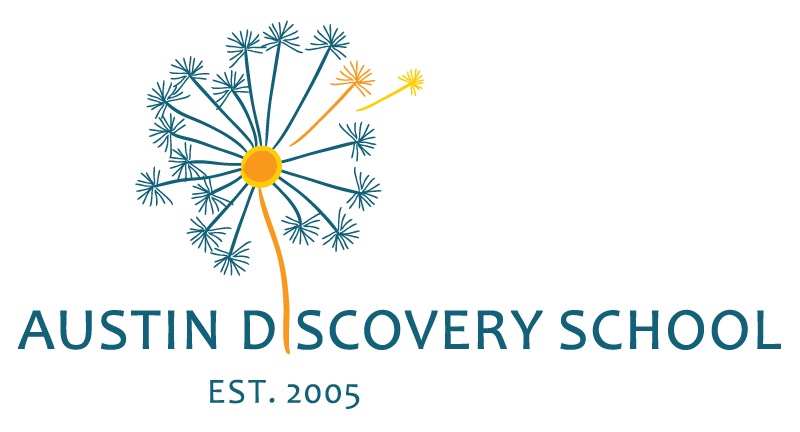Creating a Safe Place at Home
Dear Beloved ADS families,
As we start our new school year, there are so many transitions, new routines, and separation anxiety from being away from our grown ups and home base. One tool that we use at school is the safe place. You can create a safe place at home to help your children with this amazing support.
There are also some great free resources to help your child with some mindfulness activities:
Cosmic Kids Yoga- Zen Den
https://www.youtube.com/playlist?list=PL8snGkhBF7ngDp1oJtx5VcjwatxZn8xLK
Go Noodle Flow
https://www.gonoodle.com/tags/WwJzlw/flow?tab=videos
Please reach out if we can help you or your student in any way. Please feel free to email or call me. Each week, I will be sending out a newsletter to give you ideas and ways to support your student and family this year. Feel free to email me any rough spots in your family’s routine and I’m glad to include some ideas in the Hoot.
Peace, Love, and Light,
Kelly
kmcree@austindiscoveryschool.org
How to Create a Safe Place at Home?
Adapted from the article by Julie Ruffo
All learning occurs in the higher centers of the brain. Emotional upset —which is often acted out through behaviors like crying, hiding, yelling, whining, stomping and hitting — is an indicator that a child is in a lower brain state. If our goal is for children to learn, we must help them manage their emotions first.
What is the Safe Place?
The Safe Place is a self-regulation center from Conscious Discipline that children use in the classroom or at home in order to recognize they’re upset and then calm themselves. A Safe Place can help children notice, honor and manage their emotions so they can return to a learning brain state (an Executive State).
Conscious Discipline provides dozens of resources explaining the importance of a Safe Place and how to implement one. You can create a parent account at http://www.consciousdiscipline.com
At minimum, a Safe Place kit includes a representation of Conscious Discipline’s S.T.A.R., Pretzel, Drain and Balloon active calming activities and a few calming manipulatives (like a small stuffed animal, stress ball, notepad, sand toy, etc.).
You can create the items needed by using a hard plastic pencil box with 2-4 items you think will help students self-calm (see the list below for ideas) and then Velcro thelaminated active calming icons (are available on the website for free and you can color print them yourself to the inside of the lid.)
Self Calm items for the safe place:
Pencil boxes
Finger puppets
Hand cream— add stickers to make “Calming Cream” and “Cranky Cream”
Fidgets
Stress balls / Koosh balls
Bubble wrap
Squishy balls
DIY calm down bottles (use mini water bottles instead of Voss)
Pinwheels
Plastic leis
Mini slinky
Foam hair curlers
Ice compresses
Stretch animals
Pop beads
Car wash mitts
Small stuffed animals
How to Use the Safe Place Kit
In order for a Safe Place kit to be helpful, adults must teach children how and when to use it. Teachers us and teach theSafe Place just as they would teach a learning center or academic skill: with demonstration, support activities and lots of practice. (Reading Shubert is a S.T.A.R. or Sophie is a S.T.A.R. can help!) Parents would do the same, and then use the kit with their children during actual moments of upset. After ample practice together, children will begin to use theSafe Place more independently.
During upset, children may recognize that the Safe Place would be helpful or an adult might suggest it. Adults can encourage children to use the Safe Place kit by using a phrase like, “Breathe with me. (Take a breath.) You seem __(name the feeling)__. See if there’s something in your Safe Place Kit that would help you become calm.” Children would then use the tools in their kits to guide them in regulating their emotions. Three deep belly breaths help shut off the stress response in the body, so deep breathing is a top priority! Theactive calming icons in the kit provide breathing strategies, while the manipulatives provide additional tactile support and mental relief as children continue to self-regulate.
It is helpful to set clear parameters and procedures for Safe Place use ahead of time, keeping in mind children’s temperament. It usually helps if it is a small space with some soft pillows, low lights, and depending on the child either a way for the child to have some space away from other family members or in the same room but just their own space. They will need help at first using the strategies to calm but soon will be able to independently go using the safe place and breathing techniques.
Self-regulation is a constant effort. A Safe Place is only helpful if children use it, so guide them to use their Safe Place. Practice the active calming strategies together during times of calm so children can access these skills better during times of upset. Model the breathing activities and other strategies yourself when you are upset. Consistent use of a Safe Place while reaffirming to ourselves and our students, “Breathe with me. You can handle this,” can help!

